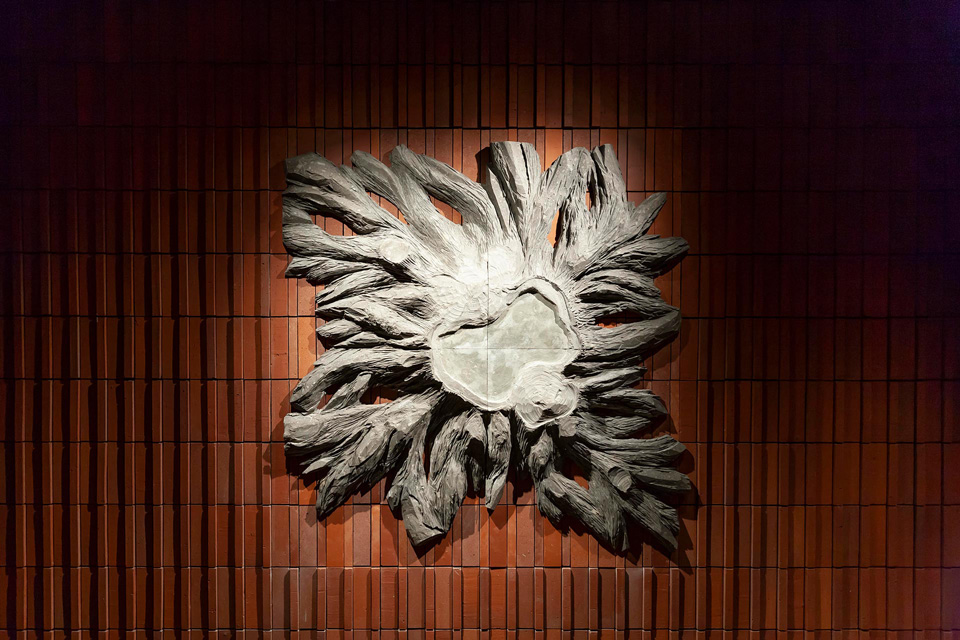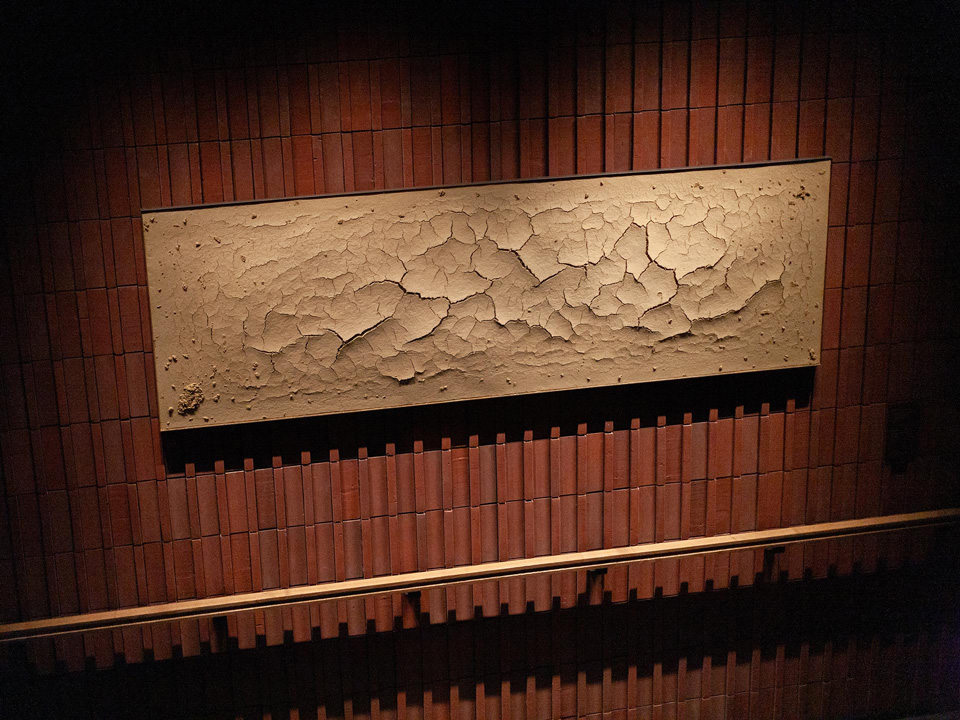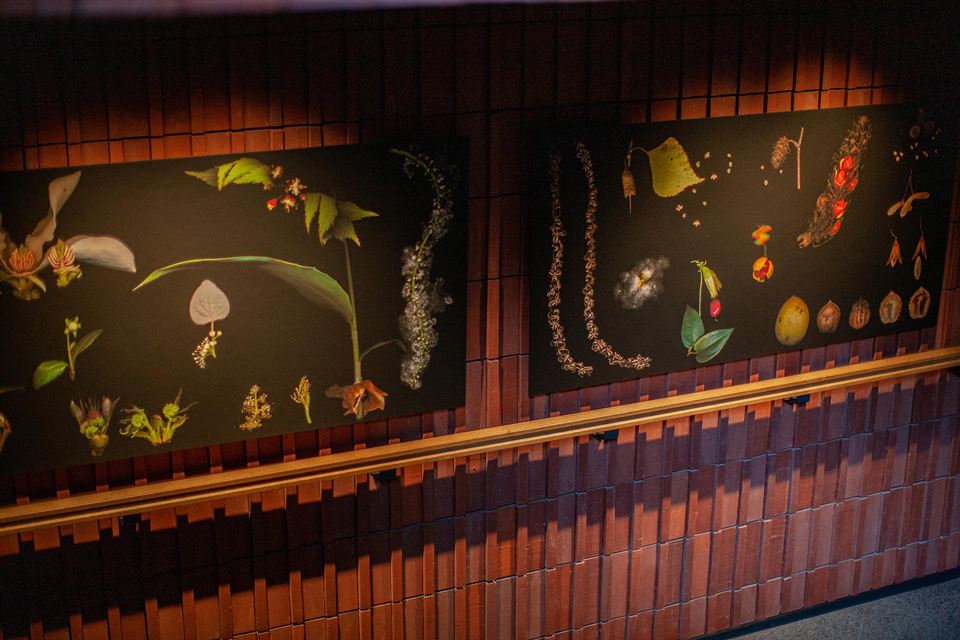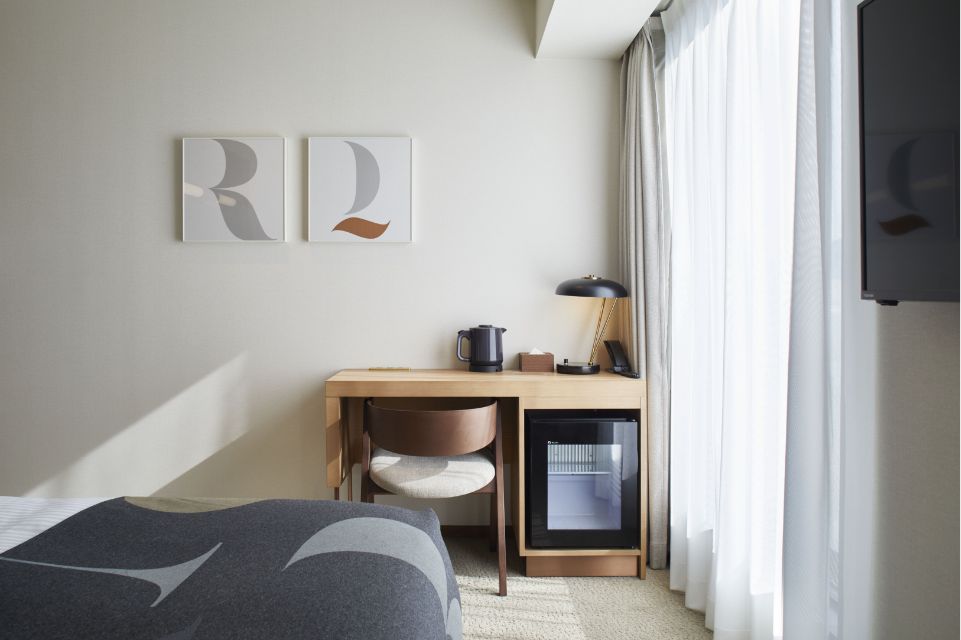At the heart of Hokkaido’s political, economical and cultural centre lies Sapporo. Since prehistoric times, Sapporo has developed alongside and embraced various cultures including that of the native Ainu people and the pioneering days of the Meiji period. It is a city that has always been open to new ideas and with each evolution it does so with strength and tolerance. We describe this as fusion.
Our Gallery
From the POLE TOWN underground passageway, there is a stairwell that leads directly to THE KNOT SAPPORO. Here, where it connects the basement entrance to the 2nd floor lobby, four works are exhibited on the theme of "from the birth of the earth to the breath of life."

Hiroyasu KOSUKEGAWA
Title: Caldera
Location: underground passageway
Data of Work: 2020 (made for THE KNOT SAPPORO)
https://hiroyasukosukegawa.jp/
A work that tells the history of nanseki, Sapporo soft stone, a material indispensable for Hokkaido architecture. A caldera forms as a result of volcanic activity and this particular work is based on Lake Shikotsu, a caldera that was made by an eruption about 40,000 years ago, and was the original source of nanseki. This sculpture is made from the soft stone and provides a bird’s eye view of the lake. This work looks like a stump rooted in the earth; like an entire lake; like a trace of a fallen meteorite. The lines cut by human hands coincidentally resemble the grid that makes up Sapporo City. Everyone sees something different when they encounter this work. The exposed soft stone used is the same material as that used on the front desk of the hotel on the second floor and the stone of the bar counter at LES BOIS. One way to appreciate Caldera is to compare the texture and appearance of these two quite different faces of the stone.

Keisuke NODA
Title: The vitality of the soil that nurtures all things.
Location: underground passageway
Date of Work: Autumn 2020
http://www.nodasakan.com/
In this work which was created at and for THE KNOT SAPPORO, the beauty and power of the raw material is transformed using the artist's aesthetic sense, working with not against the existing Ebetsu bricks to express the vitality of the soil that nurtures all things, created with the power of the material with only little human interference and technique.

Left: The Backwoods of My Home_Spring to early summer, right: The Backwoods of My Home_Summer
Satoshi SONDA
Title: the plants in the neighboring forest;
one frame, the changing of the seasons
Location: 1F staircase
Date of Work: Autumn 2020
http://scanbotanica00.sblo.jp/
Using plants that grow in the forests of Hokkaido as a base material, the artist created works for THE KNOT SAPPORO by placing the plants directly on a scanner and photographing them from his unique perspective. The material for both works was collected not in virgin forests or forests deep in Hokkaido, but in the forests adjacent to the city of Sapporo, near THE KNOT. The mystery, sensitivity and surprise you feel from being in front of such a life-like work is strong enough that you may even forget that the delicate beauty of the forms you are seeing are artworks. These works reflect something that typically goes unnoticed in the everyday perspective of humankind.

Kineta KUNIMATSU
Title: HORIZON
Location: between 1F and 2F
Date of Work: 2020 (made for THE KNOT SAPPORO)
https://kinetakunimatsu.com/
Since 2009, Kunimatsu has been working on a series of paintings called HORIZON. Inspiration for this series came from photographs taken along the Shiraoi-cho coastline, a town in Hokkaido, near the studio. Displayed on the stairs of THE KNOT SAPPORO is a new set of three pieces from HORIZON. They are installed in like with the second floor, so you can look at them at eye level or from below—see what you can make out from each vantage point, or in different light, time of day, or season. You might see a seascape on a rainy day, or an image of vivid rays of sunlight beaming down on a dry earth, another day.
“I hope these works allow viewers to superimpose scenes and memories they have seen or had in the past, rather than limiting their imagination to what I put in front of them,” says the artist.
This is the first time for him to create such large works, which are 3 meters long and divided into three sections. These masterpieces amplify the anticipation of the beginning of the journey from the moment you arrive on the second floor.
Guest room and main hotel artwork
The letters that make up the official THE KNOT SAPPORO logo are found in different forms and arrangements throughout the hotel.

1F elevator hall

Example art in a guest room
In the first floor entrance, the logo is broken apart and fused together to create a visual sym-bol of the first floor and to mark your arrival to the hotel. Further, at times in the hotel parts of the logo have been dissected to match the interior design and appear different depending on the surface they inhabit.